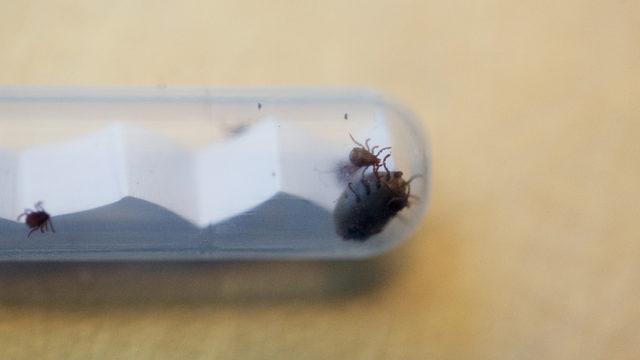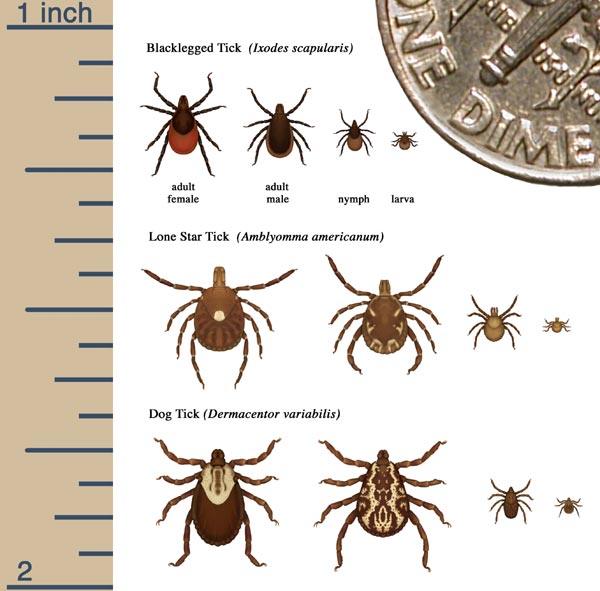Tick-borne disease information for Massachusetts

Ticks are tiny bugs most likely found in shady, damp, brushy, wooded, or grassy areas (especially in tall grass), including your own backyard.

Different kinds of ticks feed on the blood of mammals (including people, dogs, cats, deer, and mice), birds, or reptiles (snakes and turtles, for example). In Massachusetts, certain kinds of ticks can bite you and spread diseases like Lyme disease, babesiosis, anaplasmosis, tularemia, Rocky Mountain spotted fever, Borrelia miyamotoi, and Powassan virus.
Ticks do not fly or jump. They attach to animals or people that come into direct contact with them. Deer ticks and dog ticks are found throughout Massachusetts; Lone Star ticks are also found in some places in Massachusetts.
Black-legged Ticks
Black-legged ticks, sometimes called deer ticks, are responsible for spreading Lyme disease, babesiosis, anaplasmosis, Borrelia miyamotoi, and Powassan virus. Both nymph (young) and adult black-legged ticks will bite humans. The highest risk of being bitten by this kind of tick occurs throughout the spring, summer and fall seasons. However, adults can also be out searching for a host any time winter temperatures are above freezing. Black-legged tick nymphs are the size of a poppy seed and adults are the size of a sesame seed.
Dog Ticks
Dog ticks are responsible for spreading Rocky Mountain spotted fever and certain types of tularemia. In general, only the adult dog tick will bite humans. The highest risk of being bitten by a dog tick occurs during the spring and summer seasons. Adult dog ticks are about the size of a watermelon seed.
Lone Star Ticks
Lone star ticks are not a significant source of human illness in Massachusetts at this time but are capable of spreading tularemia, ehrlichiosis and southern tick-associated rash illness (STARI). Lone star tick saliva can be irritating but redness and discomfort at a bite site does not necessarily indicate any infection. Exposure to Lone Star tick saliva has been shown to cause an allergy to red meat in some people. The nymph and adult females most frequently bite humans.

Source of this post from Mass gov Thank you!
You can view fact sheets about various tick-borne diseases:
- Lyme Disease
- Anaplasmosis (HGA)
- Babesiosis
- Borrelia miyamotoi
- Powassan virus
- Rocky Mountain Spotted Fever
- Tularemia


nockedup Massachusetts outdoors.